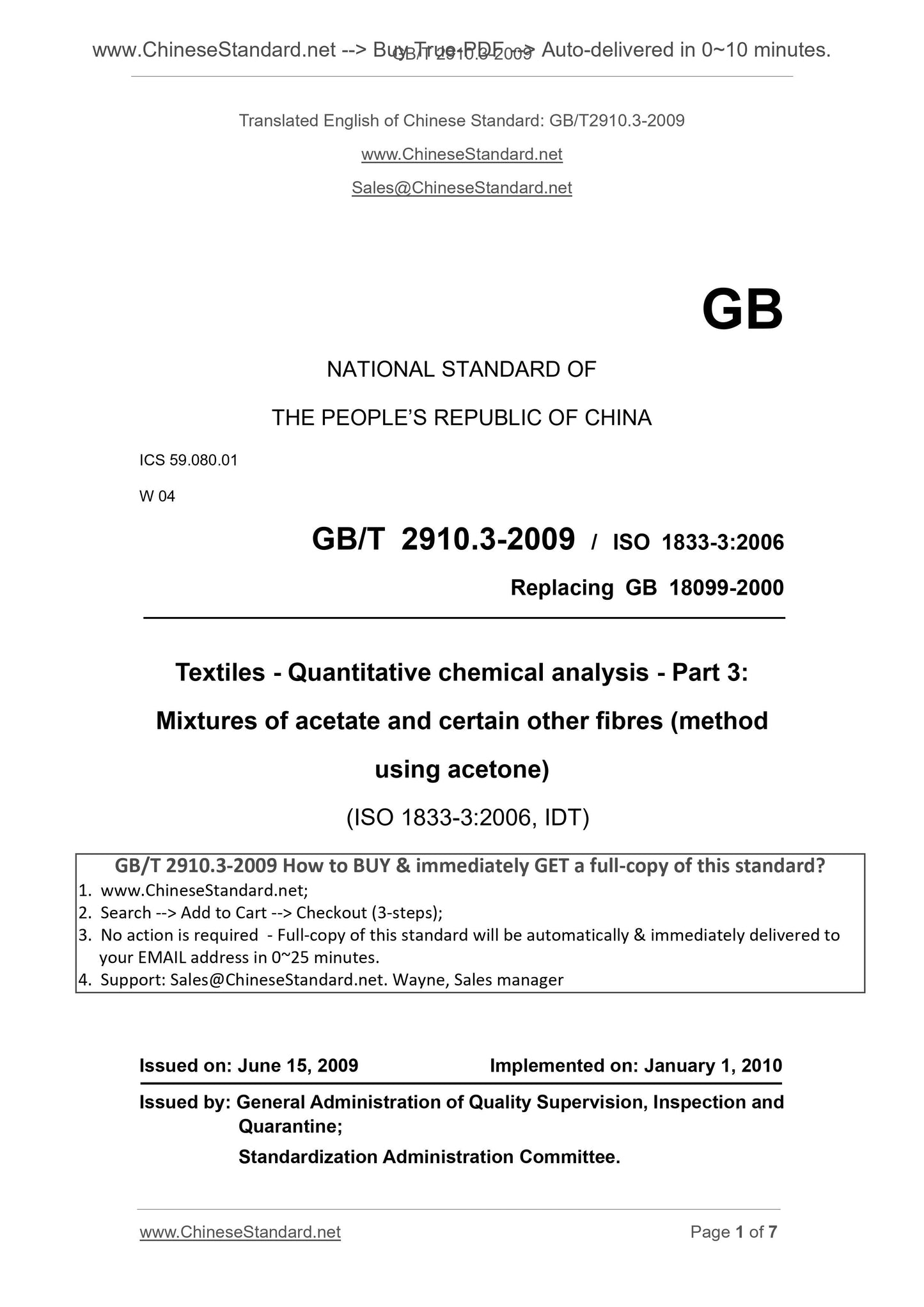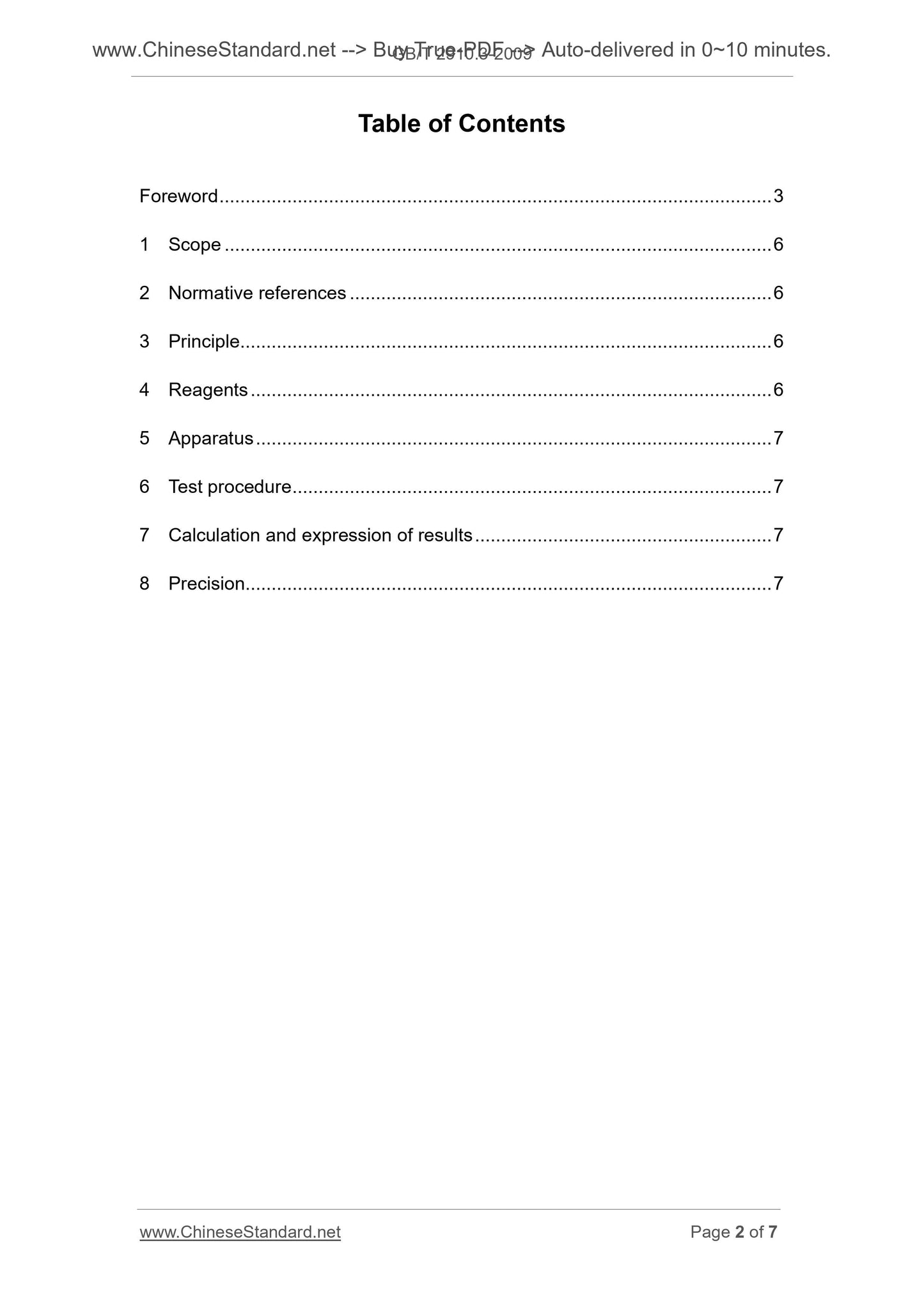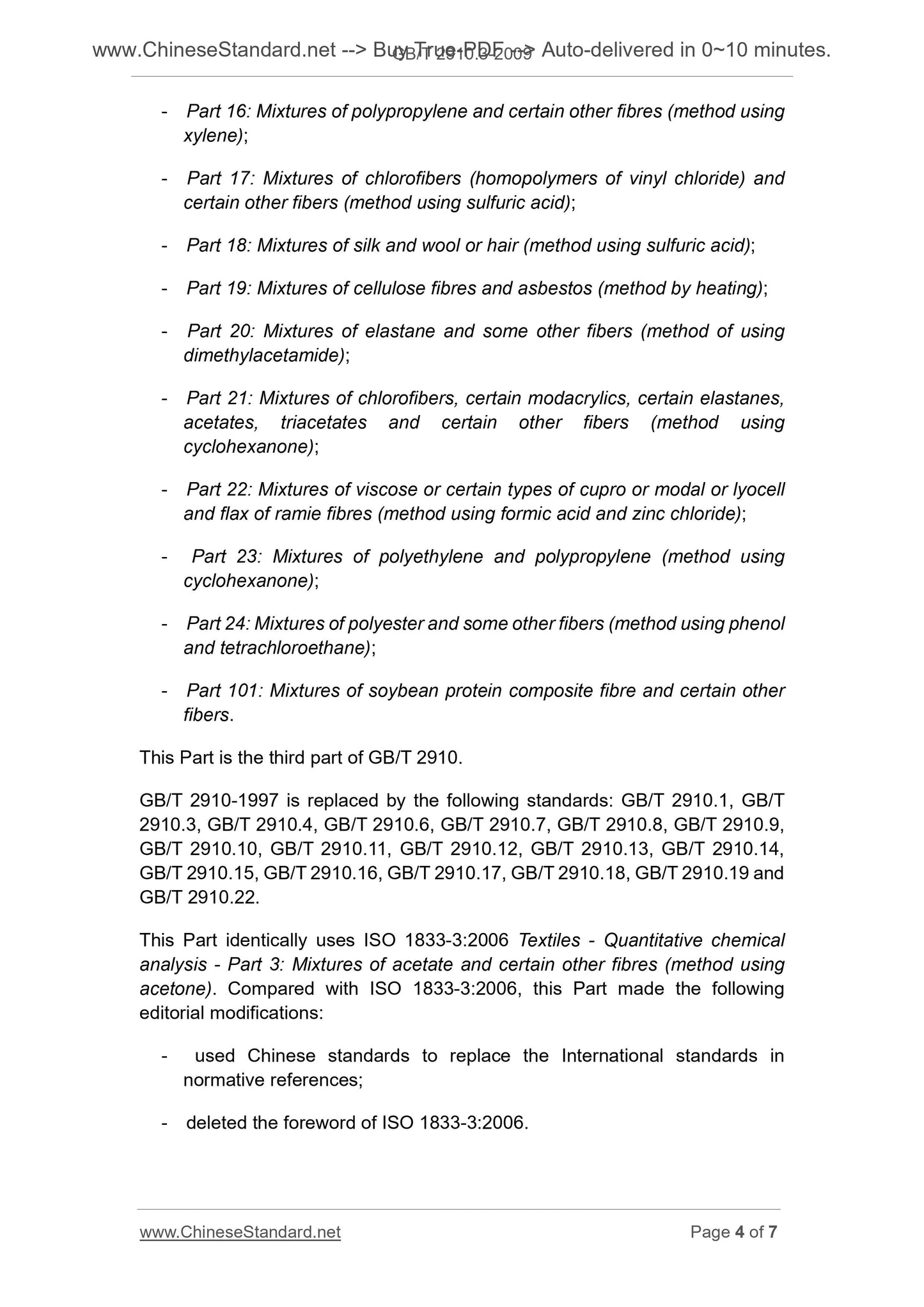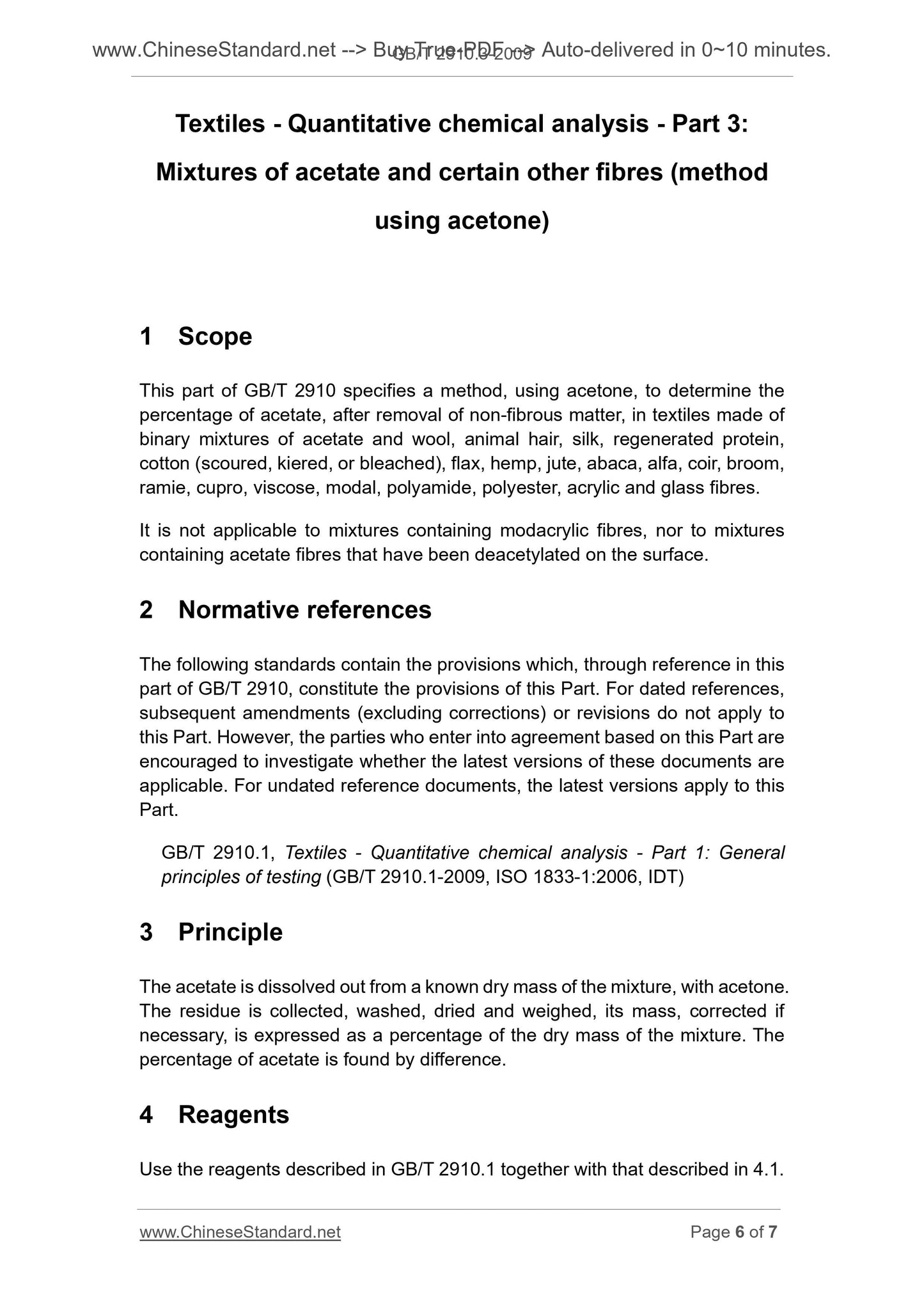1
/
of
4
www.ChineseStandard.us -- Field Test Asia Pte. Ltd.
GB/T 2910.3-2009 English PDF (GB/T2910.3-2009)
GB/T 2910.3-2009 English PDF (GB/T2910.3-2009)
Regular price
$70.00
Regular price
Sale price
$70.00
Unit price
/
per
Shipping calculated at checkout.
Couldn't load pickup availability
GB/T 2910.3-2009: Textiles -- Quantitative chemical analysis -- Part 3: Mixtures of acetate and certain other fibers (method using acetone)
Delivery: 9 seconds. Download (and Email) true-PDF + Invoice.Get Quotation: Click GB/T 2910.3-2009 (Self-service in 1-minute)
Newer / historical versions: GB/T 2910.3-2009
Preview True-PDF
Scope
This part of GB/T 2910 specifies a method, using acetone, to determine thepercentage of acetate, after removal of non-fibrous matter, in textiles made of
binary mixtures of acetate and wool, animal hair, silk, regenerated protein,
cotton (scoured, kiered, or bleached), flax, hemp, jute, abaca, alfa, coir, broom,
ramie, cupro, viscose, modal, polyamide, polyester, acrylic and glass fibres.
It is not applicable to mixtures containing modacrylic fibres, nor to mixtures
containing acetate fibres that have been deacetylated on the surface.
Basic Data
| Standard ID | GB/T 2910.3-2009 (GB/T2910.3-2009) |
| Description (Translated English) | Textiles -- Quantitative chemical analysis -- Part 3: Mixtures of acetate and certain other fibers (method using acetone) |
| Sector / Industry | National Standard (Recommended) |
| Classification of Chinese Standard | W04 |
| Classification of International Standard | 59.080.01 |
| Word Count Estimation | 6,668 |
| Date of Issue | 2009-06-15 |
| Date of Implementation | 2010-01-01 |
| Older Standard (superseded by this standard) | GB/T 2910-1997 |
| Quoted Standard | GB/T 2910.1 |
| Adopted Standard | ISO 1833-3-2006, IDT |
| Regulation (derived from) | National Standard Approval Announcement 2009 No.8 (Total No.148) |
| Issuing agency(ies) | General Administration of Quality Supervision, Inspection and Quarantine of the People's Republic of China, Standardization Administration of the People's Republic of China |
| Summary | This standard specifies the method using acetone go unless determined by the following two-component fibers composed of a mixture of fibrous material after acetate fiber content approach: acetate fibers and wool, animal hair, silk, regenerated protein fibers, cotton (combed, drift boiled or bleached), flax, hemp, ramie, jute, abaca, Stipa hemp, coir, gorse Ma, copper ammonia fiber, viscose fiber, modal fiber, polyamide fiber, polyester fiber, polyacrylonitrile fibers and glass fibers. This method is not applicable to mixtures containing modified polyacrylonitrile fibers, does not apply to the surface of a mixture of acetate fibers have been stripped of the acetyl group. |
Share







